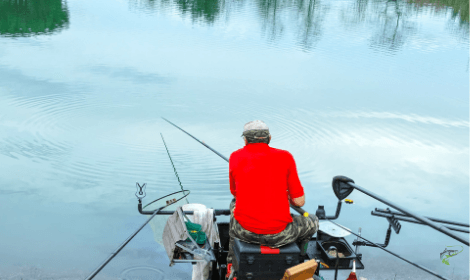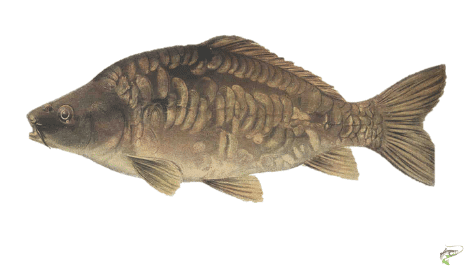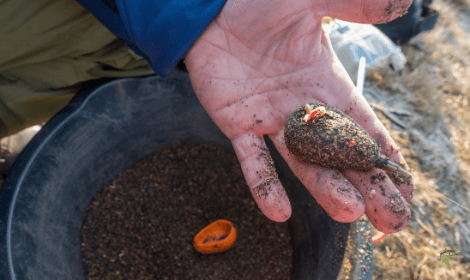
Fishing nowadays is more than just a livelihood. It’s a recreation sport that requires skills, exertion and is competitive in certain cases. If you love fishing, you might have come across match carp fishing, which brought you here today.
Well, you’ve found a great place to learn about it.
In this article, you will find:
- What is match carp fishing
- General Match Fishing Rules
- Match fish species
- And things you need for match fishing.
Good News: I have some tips and tricks for you at the end of this guide, make sure to stick around. With that in mind, let’s get started!
What Is Match Carp Fishing?
Here’s some historical context: match carp fishing started in the late 80s and early 90s when carp fishing established itself as a sport. Back then, night fishing was considered illegal, and private commercial waters didn’t exist.
In 1994 Raphael Faraggi, owner of Fishabil first organized a very high-profile event that would attract international competitors and a massive prize fund. Eventually, it has turned into a craze itself.
Being a very popular carp fishing style in South Africa and Europe, match carp fishing aims to catch as many fish as possible and choose the winner by the total weight of all the fish caught.
In other words, it’s a fishing competition where a match draws a peg, and an angler has to fish only from that peg for the duration of the event.
Now before we jump into the activity, let’s first look at some rules this sport follows.
Common Match Carp Fishing Rules & Instructions
These rules vary from competition to competition, so they’re not very stringent. You might find them not applicable in the events you attend, so there’s nothing to worry about, but here they are just in case.
Event General Instructions
This list tells how anglers generally conduct match carp fishing events:
- Register yourself with the match officials and pay the amount, if any.
- Be on time as almost all the match officials don’t allow entrance after the time specified.
- Location is very important for those fishing matches – selecting venues, either by the match officials or by an open discussion with the competitors.
- Usually, match officials draw the pegs before the match.
- Competitors are free to set up floats or plumb the depth, or wet a line before the match officials’ starting signal.
- After drawing the number, you shall proceed to the corresponding number on the bank, and this will be your fishing ground for the duration..
Event Rules
Again, these rules aren’t strict, but anglers generally follow these guidelines:
- You cannot use mobile phones, cause annoyance or seek to interfere with other competitors during the competition.
- Maximum Keepnets weight must be 50 lbs.
- Management gives prizes at the end of the match.
- Competitors must stop fishing once match officials indicate the fishing signal.
- Let’s assume you are playing a fish hooked before the signal indication: then you will get not more than fifteen minutes after time has been called to land the fish.
- Make sure that your peg is clear of litter.
Tackle Rules & Suggestions
Tackle has a pivotal role to play in carp fishing matches, so here’s a list of tackle rules and suggestions:
- Only use barbless hooks – size 8 at max.
- No spodding, surface fishing, bubble floats, or floating poles
- Maximum pole length 16m.
- Only running leads or feeders are allowed.
- No peanuts or tiger nuts.
- Participants withdrawing from the match can not give their baits and ground baits to other participants during the match.
- You can use your hands to throw ground baits or use one or two-handed catapults, swim feeders, throwing sticks, bait cups, and bait droppers. But don’t use other mechanical means of projecting ground bait.
- When leaving, must remove the bait from the hook. Conceal all the tackle afterward except the keepnet from the water.
- Don’t add bait to the water after the match and take the bait with you.
- You should know how to use baiting equipment.
Now at this point, you must have a lot of questions in your mind. Let me answer a few of them.
How matches take place?
You have two options, either fish in a club match or an open match. Wondering what the difference is? In an open match, anyone can fish, whereas, in club matches, only members can fish.
The former matches are of a very high standard and include several venues that will be difficult to beat for beginners. I will recommend you to choose club matches before progressing onto the open match.
On the contrary, club matches tend to be a very friendly and good introduction to match fishing. Besides, you can also participate in team fishing events.
What are team fishing events?
If you are a beginner, team fish matches are a good option to start with. In these team matches, you get a score not by weight but by points. In team match fishing, there will be six sections for a team of six, with one angler from each team in each section.
The section winner will get one point, and the angler who finishes sixth will get six points. With this scoring system and all the points added up at the end of the match, the group with the lowest total point tally wins.
Where to start?
Are you thinking of entering the world of match fishing? Are you fishing for some time and want to test your abilities? Consider going to a fishery near you that holds regular open matches, or it’s even better to start joining any angling club.
Don’t know any local club? Well, fret not. Ask the fishing tackle shops or fisheries in your area for the club that organizes matches or search on the internet for specific info.
Considerations Before Entering a Match
Once at the venue, you need to unload all the fishing tackles you have, such as a pole or a float/feeder rod, net, seat box, bucket or bait stand, and a fishing trolley to get the gear to your swim.
Once you choose your swim, prepare your baits for fishing ahead, ground bait, pellets, or live baits such as maggots. Besides, you will need a bucket, some water, or liquid for your ground bait mix to get consistency for feeder/loose feed fishing for the day.
After reading the above rules, it is important to know the species you will fish for at the fishing venues – let’s have a look.
Species of Fishes in Match Carp Fishing Events
Match fishing and coarse fishing take place at different venues, and the match competitions take place on commercial fisheries but include a lot of coarse fish species. Some common fish species are:
Carp (Cyprinus Carpio)

Carp is popular for freshwater fishing. You can find carp in rivers as well as in still water. Effective carp baits include tiger nuts, bread, sweet corn, and worms. Anglers also use boilies or pellets to feed carp on the surface or at the bottom.
Roach (Rutilus)
Roach are very adaptable, and you can catch them from the river as well as still water. They are famous for red fins that are more orange when the roach is smaller. You can find this fish at varying depths or along weed.
Roach love maggots: try using maggots while waggler fishing on still water. It’s an incredibly effective tactic.
Rud
Scardinius Eythropthalmus or rudd live in shallow still waters with reeds, silt, or sand substrate. With a lovely golden color, rud can grow up to 5 lbs. in weight. You can use a float fishing maggots method to catch rud on still waters.
Dace (Leuciscus Leuciscus)
One can find Dace in rivers or still waters: they are quick moving and can be difficult to catch. People also call it dartfish due to how fast it moves and flies. They prefer fast-flowing water with sandy substrate. An effective method for fishing dace is trotting. The current British record stands at 1lb. 50z.
Chub (Leuciscus Cephalus)
They also live in rivers and still waters. Chubshave been stocked into some coarse fishing venues and have been caught at large weights in lakes. The effective bait for them is cheese, lobe worms, or bread flakes. Chub like lures too!
Chub are slow growers and grow 1 lb. in weight in 6-10 years, which means large chub are often very old fish. The British record chub is 9 lbs. 50z.
Common Approaches to Match Carp Fishing
Let’s discuss some common approaches to match carp fishing.
Pole Fishing
Pole fishing is the simplest yet most effective method of fishing that involves no reel. Pole sizes vary from 3m up to 20m. Interestingly, poles are of types telescopic or in separate sections with put-over joints. You can put these joints together to extend the pole to the desired length.
The poles are of carbon fiber and are lightweight, making them ideal to use even in windy conditions. It has a line attached to the tip of the pole, which has a length of elastic running through its top section that provides resistance to the fish when it takes the bait.
Elastic comes in different sizes depending on the size of the fish you intend to catch. The elastic number refers to the breaking strain in pounds and ranges from smallest (1st) to largest (20th): as it gets bigger, the elastic increases’ diameter.
Remember that different poles are for different elastic sizes. Pole fishing allows you to place the bait in the exact spot you wish to. It could be near reeds or under trees that would be elusive to reach with the traditional rod or reel approach.
Feeder Fishing

Feeder fishing is another very popular match fishing method.
In this method, you often fish using rods and reels. The main type of rod and feeder fishing is quiver tip rod. The benefit of a feeder rod is a bite indication. Yes, you can detect fish bite by watching the coloured rod tip.
What You’ll Need
By now, we have already discussed what match fishing is and its approaches. Let’s talk about some common fishing tackles when fishing matches.
The tackle you need depends on what sort of venues you fish. You will need different tackles for river, canal, and commercial (still waters). However, it would be best to have a good pole to hand at least 13m and preferably more.
Moreover, you need at least one float rod, one feeder rod, and good quality fixed spool reels. Lastly, never use low-quality or inappropriate tackle when fishing against good anglers, or you will spoil your chance.
Match Tips And Tricks
While hacks around this competition are unethical, and I discourage such practices, you can follow this list of tips and tricks to make sure you’re as efficient as you can be.
- Be cautious: never overfeed your swim! In the match, fishing anglers have to fish for 5-6 hours, so don’t make the mistake of throwing all the bait at the very beginning, as it will completely ruin your swim for the next 6 hours.
- Always keep track of your catch rate. Having a rough guide to the weight you are accumulating in a keep net and comparing it with other’s catch rate will give you an idea about how good or bad you are doing than other anglers around you.
- Link up- Always have your rigs ready. This will save you ample time when in a match. The worst thing is to make a new rig just as the fish start having a proper chew.
- Using a wide mesh landing net and long landing net handle will allow you to further fish out and more effectively. Wide mesh lets the net move rapidly and easily through the water.
These are the best tips I could give you for match carp fishing; best of luck with them!
That’s All!
Fishing is fun, but when it becomes a competition, it becomes a lot more. By now, I hope you fully understand what match carp fishing is and what are all the technicalities related to this game.
Be sure to keep the fair play rules in mind and fish like a true angler. You can read more about carp fishing here, and if you have any queries, let me know in the comments down below.

